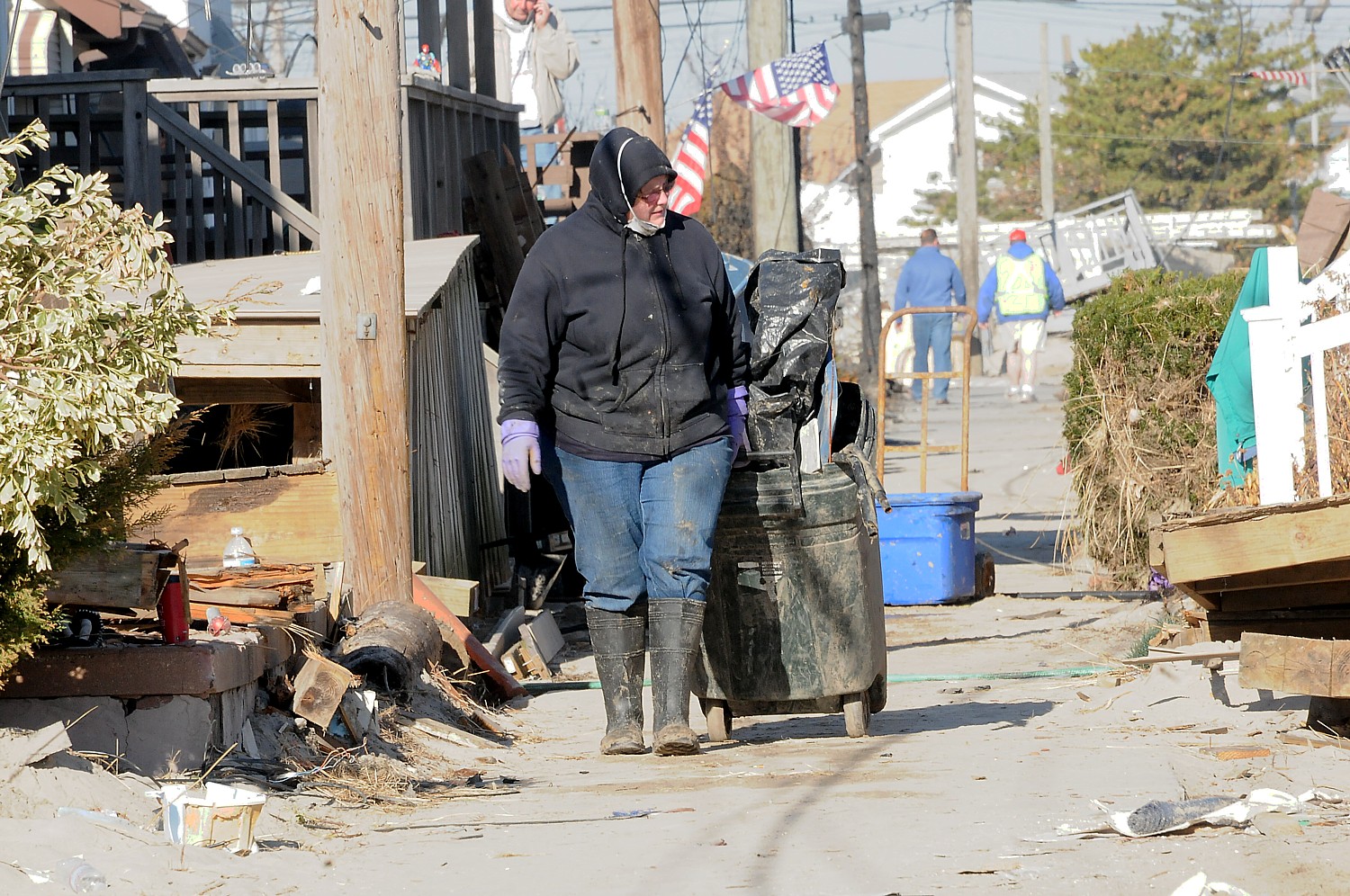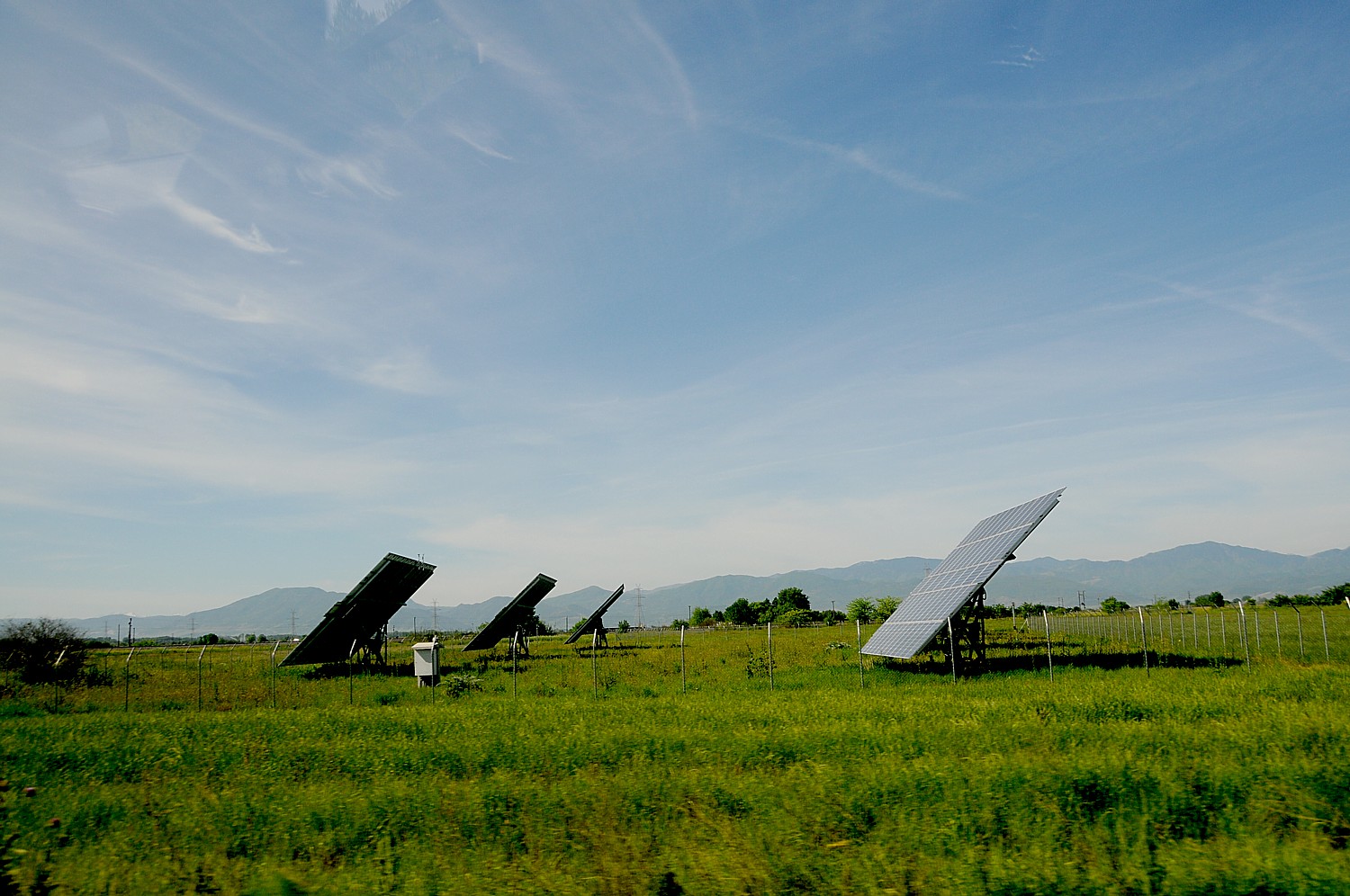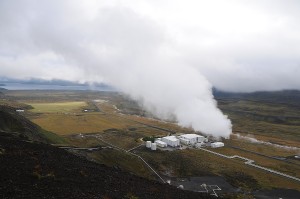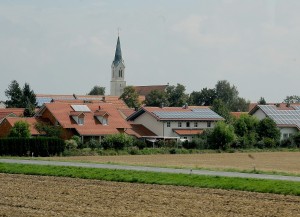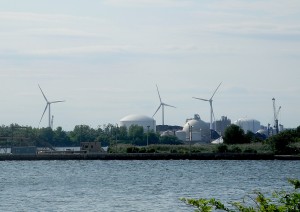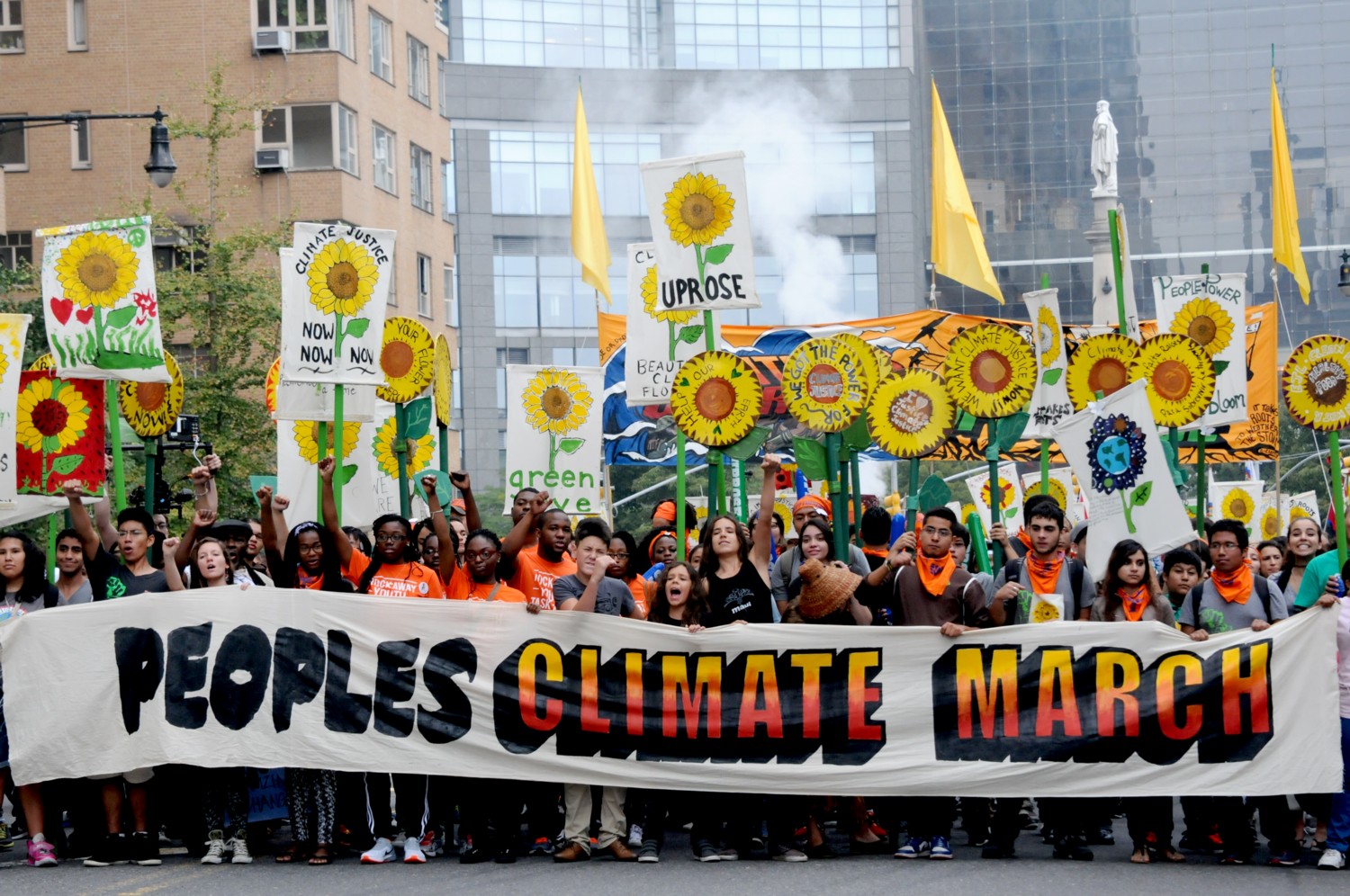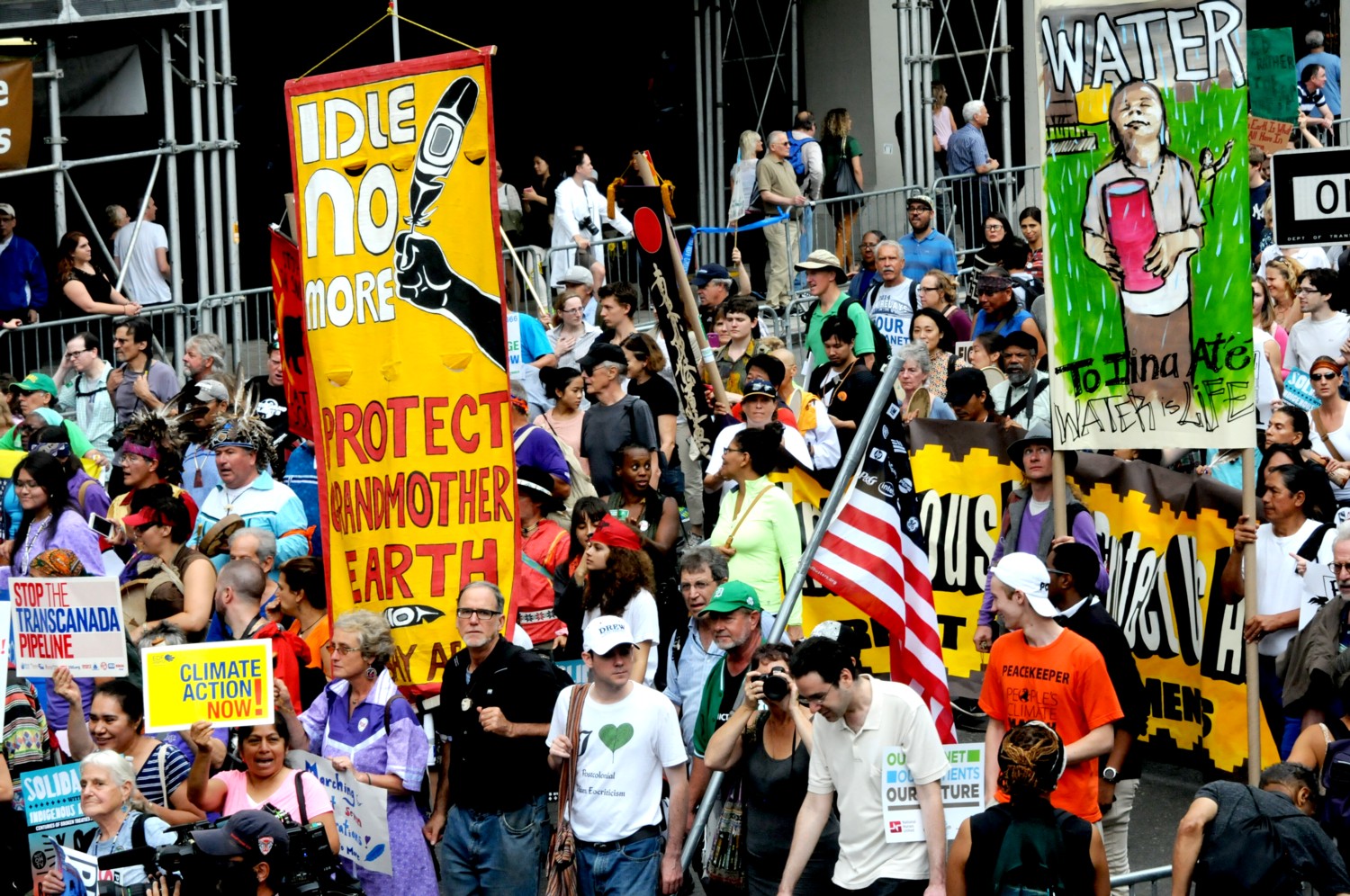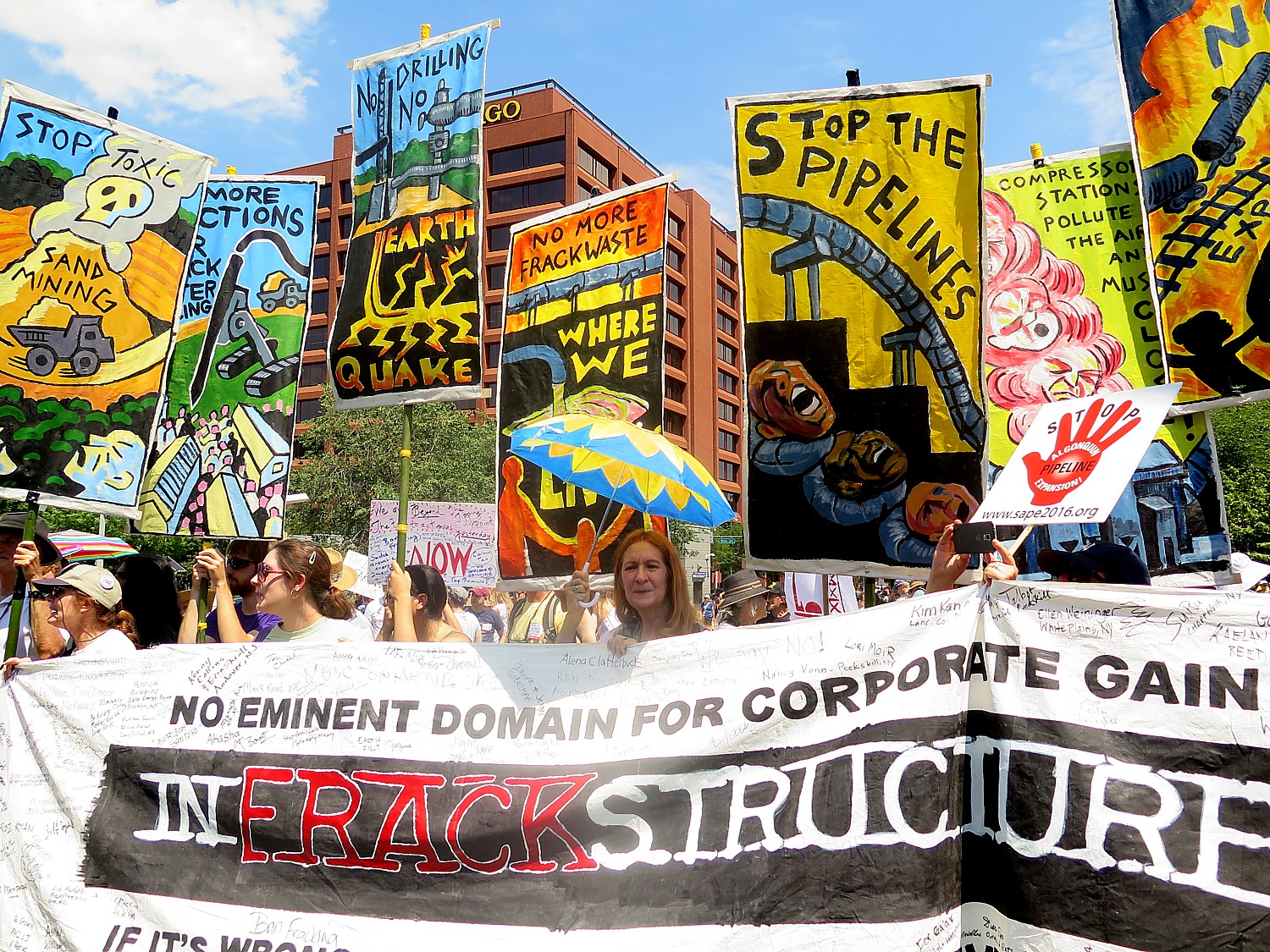
Philadelphia, PA – Local and national advocacy leaders and affected individuals held a press conference at City Hall in Philadelphia on Sunday July 24, the day before the start of the Democratic National Convention, before being joined by over 10,000 activists concerned Americans at 1 pm for the March for a Clean Energy Revolution. Convened by Americans Against Fracking, the march was intended to demand a nationwide ban on fracking and major investment in renewable energy. The march was endorsed by more than 900 environmental, health, labor, political, faith, justice, indigenous and student organizations from every state.
Advocacy leaders and individuals harmed by fracking called on the nation’s current and future leaders to ban fracking now, keep fossil fuels in the ground, stop dirty energy, transition to 100% renewable energy, and ensure environmental justice for all.
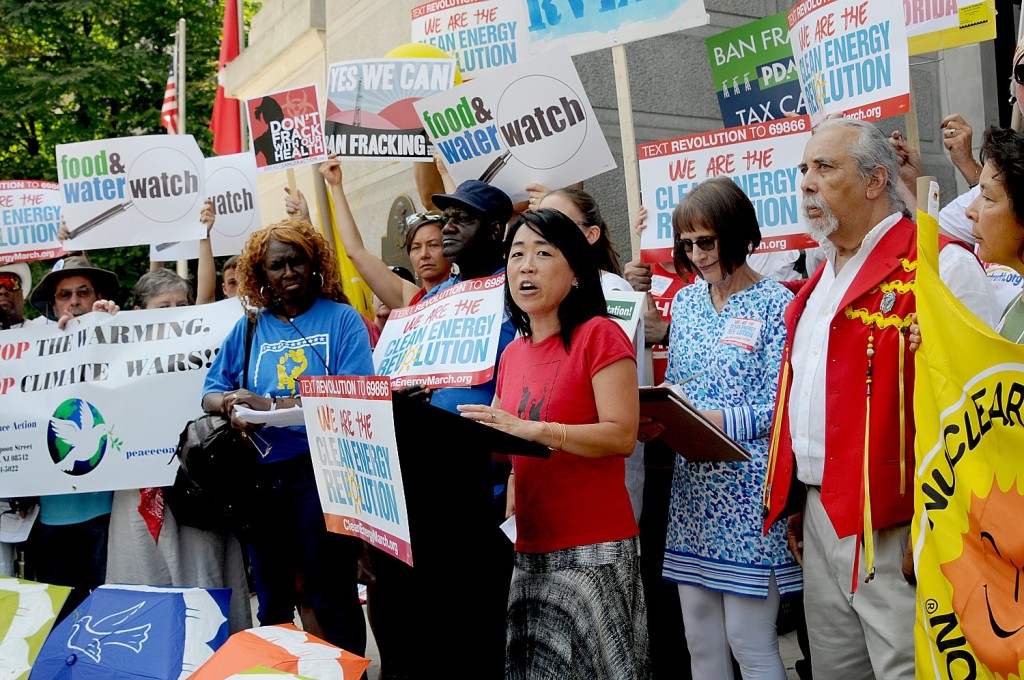
“As the first national organization in America to call for a ban on fracking, Food & Water Watch has seen the movement expand dramatically, becoming a major issue in the battle over the Democratic nomination for the presidency. Today, after listening to the science, more Americans are opposed to fracking than support it. Our elected leaders must listen to the people, which is why over a thousand groups from all 50 states endorsed the March for a Clean Energy Revolution and called for the need to keep fossil fuels in the ground and focus on renewable energy options that will create jobs, not destroy lives,” said Wenonah Hauter, Founder & Executive Director, Food & Water Watch.
The most recent Gallup poll, from March 2016, shows that Americans oppose fracking 51-36%.
“I am honored to welcome the march to our great city and to join the urgent call to free our country from its addiction to fossil fuels. Cities and elected officials cannot sleepwalk their way through a climate crisis that threatens not only our future but also our current way of life. We have a responsibility and opportunity to rebuild cities like Philadelphia through clean, just, and sustainable energy solutions,” said Helen Gym, Philadelphia City Councilmember.
“Climate change is already causing conflicts and crises around the world, from Louisiana to Syria. That’s why the peace and justice community marched today with our allies in the climate and environmental justice movement. We need to make giant leaps towards a clean energy economy and put an end to the viscous cycle of dirty wars, climate refugees, and reliance on dirty energy. The world and its inhabitants can no longer afford to suffer from poverty, illness, and racial discrimination due to wars on our people and the planet,” said Alesha Vega, Assistant Director, Coalition for Peace Action.
“We are marching to demand an end to fracking and other dangerous drilling practices that rely on toxic chemicals and are linked to an array of deadly diseases and disorders. As health professionals, public health experts and people concerned with protecting health, we are gravely concerned about the mounting scientific evidence showing that these chemicals are regularly contaminating the water, the air, and ultimately our bodies. It’s time our leaders commit to a clean energy future which does not jeopardize good health and public safety,” said Karuna Jaggar, Executive Director, Breast Cancer Action.
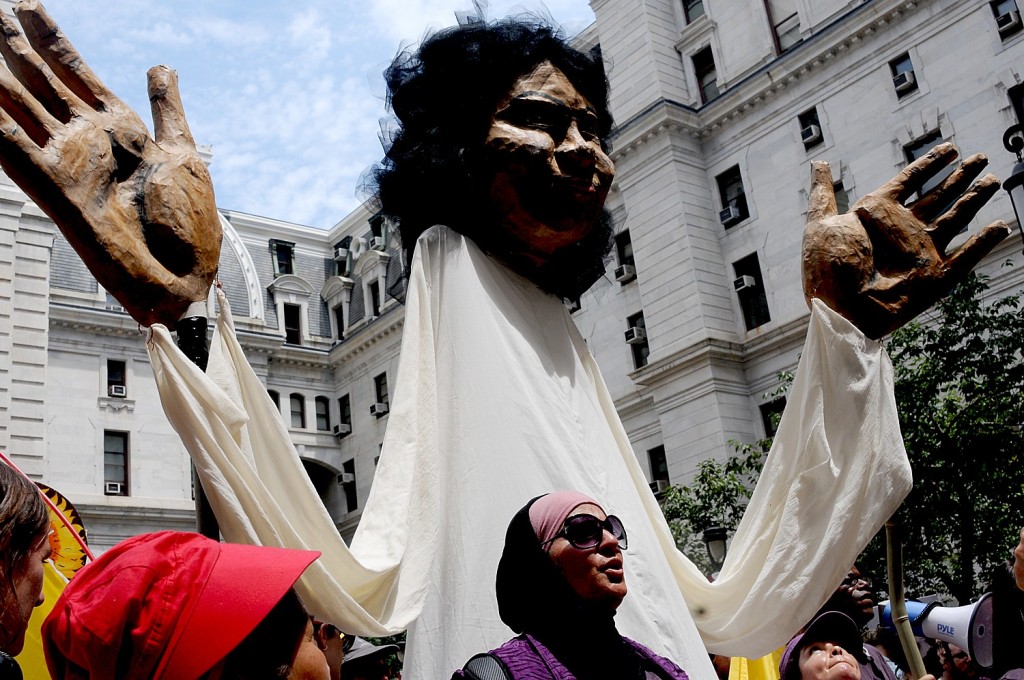
“For far too long Indigenous Peoples’ voices have been silenced and erased. Most especially when it comes to extreme extraction practices such as fracking. No longer will I stand by and watch that happen. I am here to share my Voice for my Family, for my People, for our youth and most importantly for Mother Earth. Now, more than ever, is the time to use our Voices to heal, protect and thrive!” said Krystal Rain Two Bulls, Oglala Lakota/Northern Cheyenne.
“We’ve just wrapped up a Republican National Convention filled with climate denial and extreme energy talking points. Tomorrow we start the Democratic Convention, and the question to all these leaders and politicians is: Are you willing to take the action that science demands, or are you just another kind of climate denier? Science tells us we need to keep 80% or more of fossil fuels in the ground: that means a ban on fracking, a halt to dirty trade deals like the TPP, and no more use of eminent domain for polluter gain. I’m marching today to tell all elected officials, if you’re not down to #KeepItInTheGround, you’re just another climate denier,” said Drew Hudson, Director of Environmental Action.
“The good news about moving quickly to 100% renewables is not only is it feasible with existing technology, but it will create good-paying jobs, reduce illness and death from air pollution, and result in lower energy bills compared to continued reliance on fossil fuels. We need the US to become a world leader in offshore wind, solar and conservation,” said Mark Dunlea, 350NYC and 100% Renewables Now NY Campaign.
“Science is the grand marshall of the March for a Clean Energy Revolution. As science advisor for Americans Against Fracking and a co-founder if Concerned Health Professionals of New York, I’ve reviewed hundreds of studies that reveal that fossil fuels, including fracked gas, are not safe for human health nor for the climate. It’s time for our elected leaders to lift up their heads, turn off the industry noise machine, and and listen to the data. It’s time for bold action to ban fracking, gas power plants, and new pipelines and move rapidly to 100% renewable energy,” said Sandra Steingraber, noted biologist, author, activist and science advisor to the Americans Against Fracking Coalition.
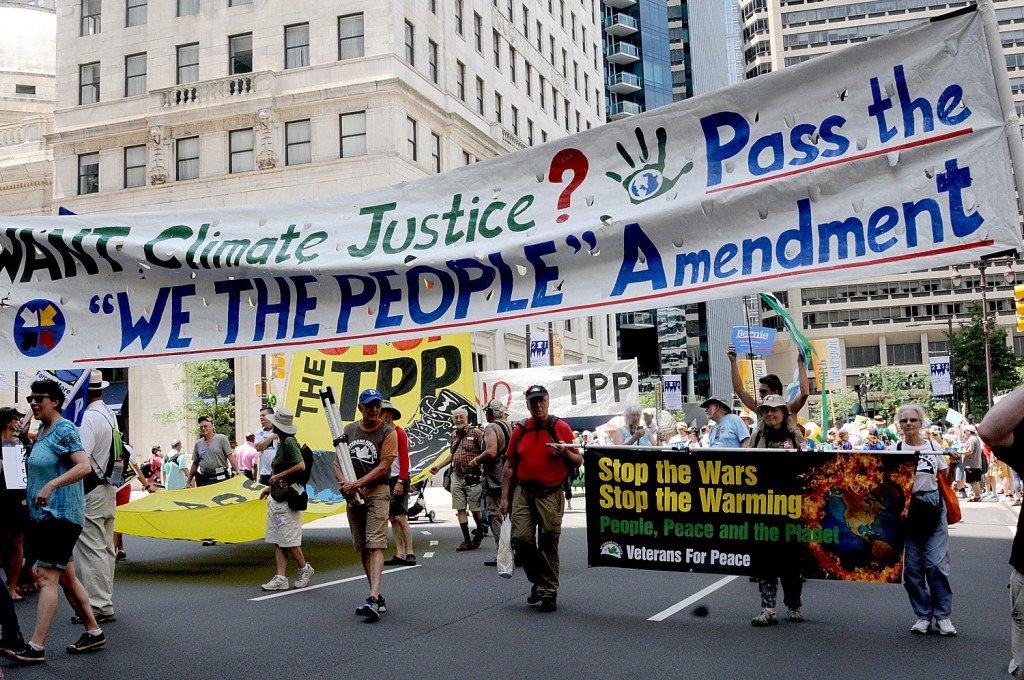
“The climate crisis is already having a substantial, harmful effect on public health in the spread of vector-borne diseases, accelerating pollution, malnutrition linked to drought induced food loss, rising sea levels, and extreme weather events, as well as the existential threat to our children, our future, and our planet. The time for words has long passed, we must act now. Air pollution from fossil fuel production and consumption kills millions of mostly working class and poor people of color around the world,” said Martha Kuhl, RN, Secretary Treasurer, National Nurses United.
“Unions represent workers around the world who will be instrumental in responding to the growing climate crisis and enabling the shift to a clean energy economy. However, we are also deeply concerned about ensuring a just transition for workers and their communities, and about environmental justice and the unequal and discriminatory impacts of climate change. Unions represent millions of organized workers across the United States and as such have a tremendous potential to confront the unbridled greed that is driving us to environmental disaster. We must be involved in this fight for our members, our families, our neighbors and our country,” said Jon Forster, AFSCME Local 375/DC37.
“We’re joining the March for a Clean Energy Revolution to stop the TPP and other bad trade deals. If the TPP is ratified this fall, it will supersede the Paris Climate Treaty and prevent us from taking the actions we need to transition rapidly to the clean energy economy by giving corporations power over our laws and our courts. The TPP makes profit more important than human health and safety and protection of the planet. We are rising together to call for a new model of trade that respects the planet and all life,” said Margaret Flowers, Stop the TPP
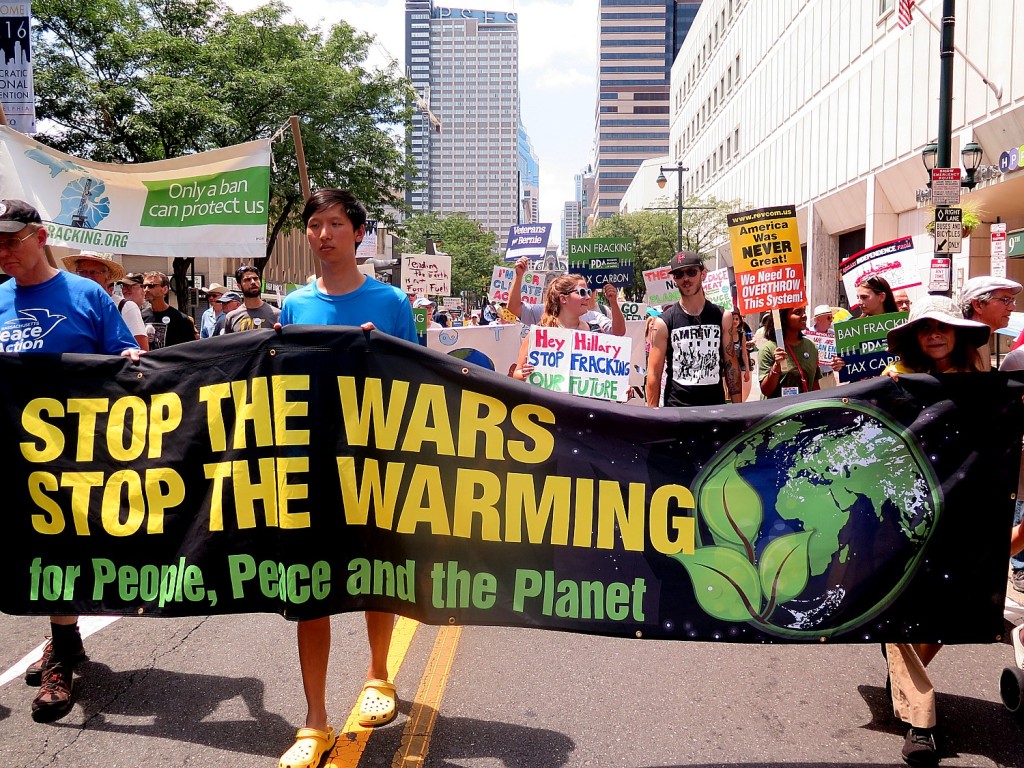
“The inFRACKstructure contingent of our March for a Clean Energy Revolution includes communities harmed and threatened by the growing number of pipelines, compressors, LNG exports facilities, oil trains, and new gas powerplants that are cutting through our communities and environment in order to service the dirty fossil fuel industry and fracked shale. This infrackstructure is inflicting devastating harm on our health and environment, and locking us into a dirty energy future. All of this damage is unnecessary because clean energy options are here today and are better able to support our energy, job, community and environmental goals. We are coming to Philadelphia to demand our political leaders from all parties put an end to dirty fossil fuels and its infrackstructure and commit to clean energy now,” said Maya van Rossum, the Delaware Riverkeeper and leader of the Delaware Riverkeeper Network.
“In order to secure a livable future for our generation, we need to a grassroots movement that’s equipped to win strategic local fights,” said Lydia Avila, Executive Director of the Power Shift Network, the organization behind Power Shift- a convergence of hundreds of young climate activists taking place in Philadelphia this weekend. “Young people came out this weekend because we want our decision-makers and future decision-makers to know that we are going to be holding them accountable for implementing strong climate policies that will create the just and healthy planet we all deserve.”
“Over one quarter of children in Philadelphia have asthma, primarily in lower income communities of color. We have the right to breathe, but corporations like the Philadelphia Energy Solutions oil refinery are poisoning us. We need our elected officials like Governor Wolf to stand up to the dirty energy industry and say no to expansion of oil and gas at the Southport site in Philadelphia!” said Teresa Hill, ACTION United.
Pennsylvanians, in particular, called on Governor Tom Wolf, a DNC Host Committee Honorary Chair, to stop harming those who live in Pennsylvania, where the fracking industry has developed more than 9,000 wells in Pennsylvania in just the past decade.
“Sunoco Logistics felled our trees, but the government that let them do it took down Democracy. What happened to my family should be a wake-up call to all Pennsylvanians that they could be next, that the Wolf administration will always put the industry’s interests over theirs,” said Elise Gerhart, Huntingdon County landowner whose family lost the woods on their property to the Sunoco Mariner East pipeline.
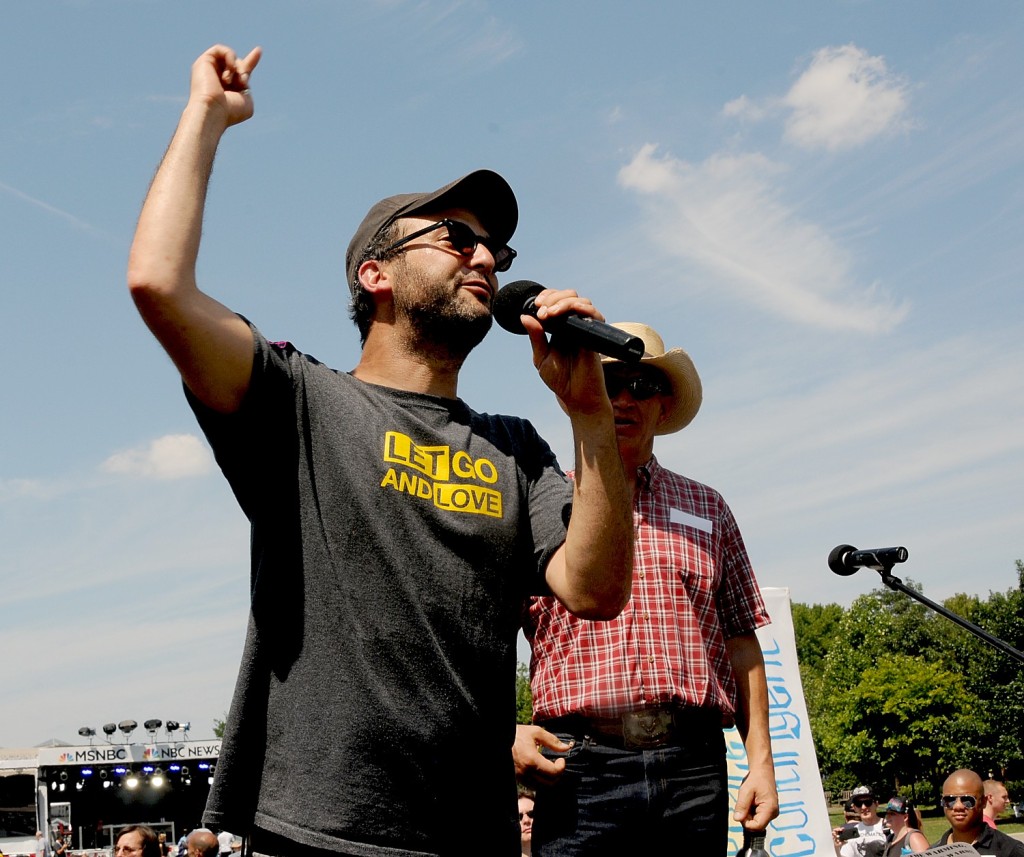
At 1 pm, over ten thousand advocates began the one-mile march at City Hall. They carried hand-painted signs and chanted demands down Market St. Final action and chants were held at Independence Hall. The day concluded with an enormous artistic display, transforming a drill rig into a sun.
The March for a Clean Energy Revolution came just after a Johns Hopkins study, published July 18 in JAMA Internal Medicine, found that people with asthma who live near bigger or larger numbers of active unconventional natural gas wells operated by the fracking industry in Pennsylvania are 1.5 to four times likelier to have asthma attacks than those who live farther away.
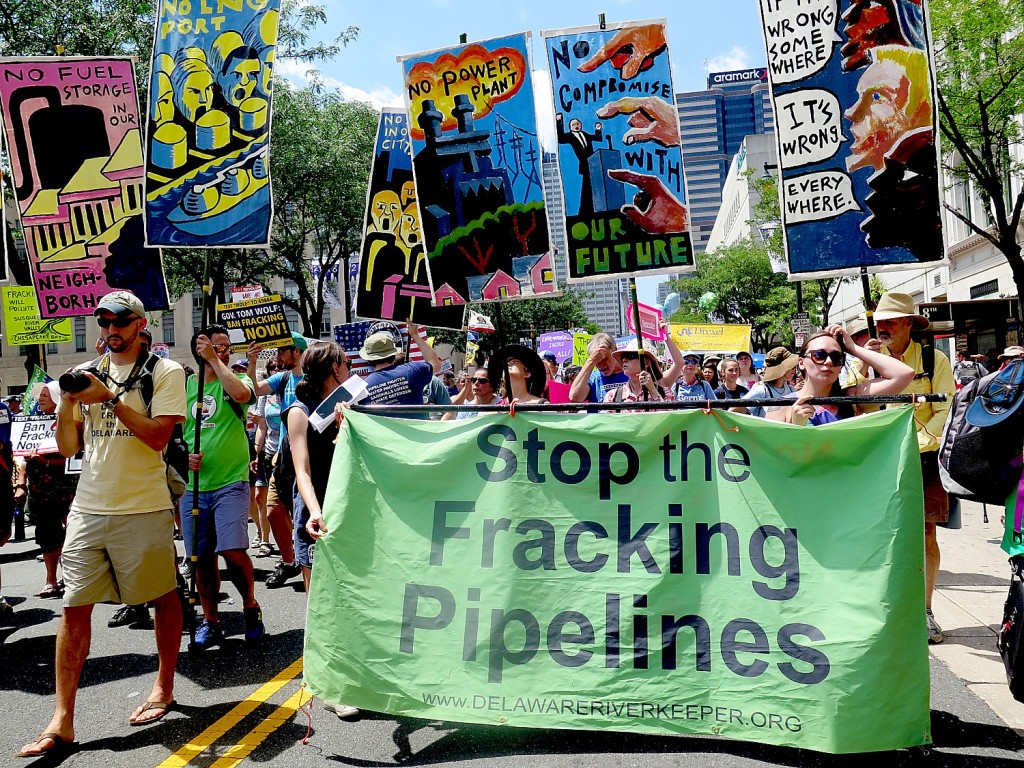
The study on fracking and asthma comes about a year after a comprehensive study linking premature births and at-risk pregnancies to fracking. Data on over 10,000 pregnancies in Pennsylvania from 2009 to 2013 showed odds of premature births increased 40% when expectant mothers live in heavily fracked communities.The vast majority of studies find risks and harms; a recent peer-reviewed study analyzing all of the relevant peer-reviewed literature found that, “the great majority of science contains findings that indicate concerns for public health, air quality and water quality.”
Pennsylvanians Against Fracking is a statewide coalition of organizations, institutions, and businesses calling for a halt to fracking in the Commonwealth. Learn more about Pennsylvanians Against Fracking at paagainstfracking.org.
Americans Against Fracking is comprised of entities dedicated to banning drilling and fracking for oil and natural gas in order to protect our shared vital resources for future generations.
Food & Water Watch, a lead organizer of the March for a Clean Energy Revolution, was the first national organization to call for a ban on fracking everywhere. Food & Water Watch champions healthy food and clean water for all. We stand up to corporations that put profits before people, and advocate for a democracy that improves people’s lives and protects our environment.

